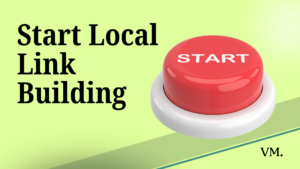Many marketers find their outreach techniques and processes daunting and time-consuming. You’re not alone if you’re struggling to build quality backlinks in 2025. This guide will equip you with effective outreach techniques that streamline your efforts and maximize results.
What is Link-building Outreach?
Link-building outreach involves contacting other website owners or content creators to request backlinks to your site. This practice is essential for improving search engine rankings and driving organic traffic. By establishing relationships with relevant websites, you can secure valuable links that enhance your online presence.
Reasons You Need to Know Effective Outreach Techniques
Understanding how to conduct effective outreach is crucial for several reasons:
- Boosts SEO Performance: Quality backlinks are a significant ranking factor for search engines.
- Enhances Brand Visibility: Outreach helps you connect with new audiences and increase brand awareness.
- Builds Relationships: Networking with other professionals can lead to future collaborations and opportunities.
Mastering these techniques can transform your link-building strategy from overwhelming to manageable, making it an essential skill for any digital marketer.
Step-by-Step Instructions to Execute Effective Outreach
This unique process simplifies outreach into actionable steps that anyone can follow. You can achieve successful link-building without the stress of focusing on strategic communication and relationship-building.
- Identify Your Target Audience
- Craft Personalized Messages
- Follow Up Strategically
Now, let’s go deeper into each step to ensure you can implement these techniques effectively.
Step 1: Identify Your Target Audience
Begin by defining the websites and influencers relevant to your niche. Use tools like Ahrefs or SEMrush to analyze competitor backlinks and identify potential targets. Focus on sites with high domain authority and relevance to your content.
Step 2: Craft Personalized Messages
Once you’ve identified your targets, create personalized outreach emails. Address the recipient by name and mention specific content from their site that you appreciate. Clearly explain why linking to your content would benefit their audience.
Step 3: Follow Up Strategically
After sending your initial outreach email, wait about a week before following up. A polite reminder can increase your chances of receiving a response. Keep it brief and reiterate the value of your proposal.
Key Considerations For Successfully Executing Outreach Techniques
While following these steps, keep in mind a few key insights:
- Quality Over Quantity: Focus on building genuine relationships rather than sending mass emails.
- Be Patient: Link building is a gradual process; results may take time.
- Track Your Efforts: Use spreadsheets or CRM tools to monitor responses and follow-ups.
Taking it to the Next Level: How to Enhance Your Outreach Strategy
To elevate your outreach efforts, consider leveraging social media platforms like Twitter or LinkedIn for initial engagement before sending emails. Engaging with potential link partners through comments or shares can warm up your relationship, making them more receptive to your requests.
Alternatives to Traditional Outreach Methods
If traditional email outreach feels too daunting, explore alternative methods such as:
- Guest Blogging: Offer high-quality content in exchange for backlinks.
- Content Collaborations: Partner with other creators for joint projects that naturally include backlinks.
- Social Media Engagement: Build relationships through active participation in relevant online communities.
What Are Some Effective Outreach Techniques for Link-building
Effective outreach techniques for link building are essential for enhancing your website’s authority and driving organic traffic. Here are some proven strategies to help you secure valuable backlinks:
1. Guest Blogging
Offer to write informative articles for reputable blogs in your industry. This not only provides a backlink to your site but also establishes you as an authority in your niche. Ensure your content is unique and tailored to the host blog’s audience to increase acceptance rates.
2. Broken Link Building
Identify broken links on authoritative websites and reach out to the site owners, suggesting your content as a replacement. This method benefits both parties: you gain a backlink, and the site owner fixes their broken link.
3. Resource Page Links
Suggest your content for inclusion on resource pages relevant to your industry. These pages often curate valuable resources for readers, making them a great opportunity for link placement.
4. Unlinked Mentions
Find instances where your brand or content is mentioned without a hyperlink. Reach out to those sites and politely request that they add a link to your content. This approach targets easy wins in link acquisition.
5. Infographic Outreach
Create visually appealing infographics that provide valuable information, then pitch them to relevant websites. Infographics are highly shareable and can naturally attract links, enhancing your SEO efforts.
6. Networking and Relationship Building
Engage with other website owners, bloggers, and influencers in your niche through social media or forums. Building genuine relationships can lead to collaboration opportunities and guest posting invitations, which are beneficial for link-building.
Identify high-performing content in your niche and create something even better. Then, reach out to the sites linking to that content, suggesting they replace their link with yours due to its superior quality.
8. Social Media Engagement
Utilize social media platforms to connect with industry influencers and journalists. By actively engaging with their content, you can increase your visibility and create opportunities for backlinks through mentions or collaborations.
Incorporating these outreach techniques into your link-building strategy can significantly enhance your website’s profile and authority in search engines, leading to improved traffic and visibility over time.
What Are The Best Types of Content to Pitch for Link-building
When it comes to link building, certain types of content are particularly effective for pitching to secure backlinks. Here are some of the best content types to consider:
1. Original Research and Data-Driven Content
Content that includes original research or unique data insights is highly valuable. This type of content not only contributes to the conversation in your field but also provides a credible source for other content creators looking to reference authoritative findings.
2. Infographics
Visually appealing infographics can distill complex information into easily digestible formats. Their shareable nature makes them ideal for attracting links from websites that want to enhance their content with engaging visuals.
3. In-depth guides and How-To Articles
Comprehensive guides that thoroughly explore a subject demonstrate expertise and serve as key reference materials. These articles often attract links because they provide valuable, actionable information to readers.
4. Thought Leadership Pieces
Articles that showcase your expertise and insights on industry trends or challenges can position you as a thought leader. These pieces are more likely to be linked by others who want to reference credible voices in the industry.
5. List Posts
Numbered list posts, or “listicles,” pack a lot of value into digestible chunks and have been shown to generate more backlinks than other content formats. They are easy to read and share, making them effective link magnets.
6. Interactive Content
Content that engages users interactively—such as quizzes, calculators, or tools—can be very appealing for link building. This type of content encourages sharing and can attract links from those who find it useful.
7. Resource Lists and Curated Content
Compiling resource lists or curating existing content into comprehensive guides can attract links from those featured in the list or from websites seeking valuable compilations.
8. Expert Interviews and Podcasts
Featuring interviews with industry experts or hosting podcasts can draw attention and links from those who value the insights shared. Other websites may link to these interviews as references for authoritative voices in the field.
9. Roundup Posts
Creating roundup posts that compile various tips or insights from different contributors can be highly shareable. These posts not only provide diverse perspectives but also encourage those featured to share the content, increasing your chances of earning backlinks.
By focusing on these types of content, you can enhance your link-building strategy and improve your chances of securing valuable backlinks from reputable sources.
Wrapping Up and My Experience With Link Building Outreach
Successful link-building through effective outreach doesn’t have to be overwhelming. By following these structured techniques, you can streamline your efforts and achieve significant results in enhancing your website’s authority. Having navigated this process myself, I can attest that the key lies in personalization, patience, and persistence. Embrace these strategies, and watch as your link-building efforts transform into an efficient and rewarding experience.
FAQ
Link-building outreach is the process of contacting other websites, bloggers, influencers, or content creators to request backlinks to your site. The goal is to build relationships and enhance brand visibility while improving your site's authority in search engines.
Link-building outreach is crucial because backlinks from high-authority sites can significantly improve your website's search engine rankings and visibility. It helps establish credibility and drives organic traffic to your site.
Effective content types for pitching include:
- Original Research: Unique data insights that provide value.
- Infographics: Visually appealing content that is easily shareable.
- In-Depth Guides: Comprehensive articles that serve as reference materials.
- List Posts: Numbered lists that are easy to read and share.
- Interactive Content: Quizzes or tools that engage users.
- Resource Lists: Curated lists of valuable resources.
- Expert Interviews: Insights from industry leaders.
Research your industry to find relevant websites, bloggers, and influencers. Use tools like Ahrefs or SEMrush to analyze competitor backlinks and identify potential targets based on their authority and relevance.
Your outreach email should be personalized and concise. Include:
- A greeting using the recipient's name.
- Specific compliments about their content.
- A brief explanation of how your content adds value to their audience.
- A clear call to action, such as asking them to consider linking to your content.
If you don't receive a response within a week, it's acceptable to send a polite follow-up email. However, avoid following up more than once to prevent coming across as spammy.
Some effective strategies include:
- Guest Blogging: Offering valuable content in exchange for backlinks.
- Broken Link Building: Suggesting your content as a replacement for broken links on other sites.
- Resource Page Links: Pitching your content for inclusion on resource pages relevant to your niche.
- Unlinked Mentions: Contacting sites that mention your brand without linking.
Use spreadsheets or specialized tools like Pitchbox or Buzzstream to manage and track your outreach campaigns effectively. This will help you monitor responses and follow-ups.
Common mistakes include:
- Sending generic emails without personalization.
- Focusing solely on quantity over quality in outreach efforts.
- Failing to provide value in exchange for a backlink.
To increase your success rate:
- Research the recipient thoroughly before reaching out.
- Personalize each email based on the recipient’s content and interests.
- Build genuine relationships over time rather than seeking immediate links.



